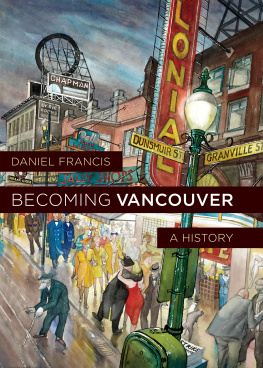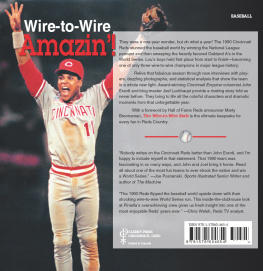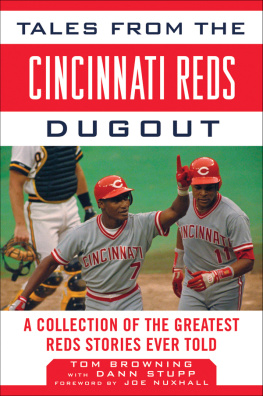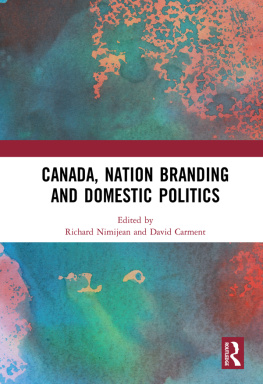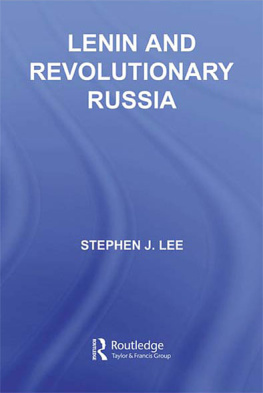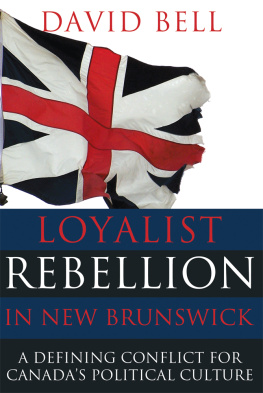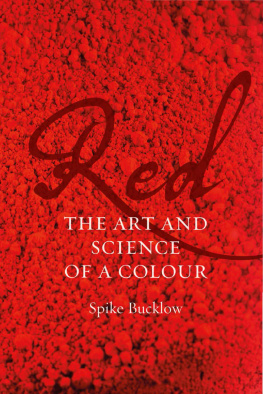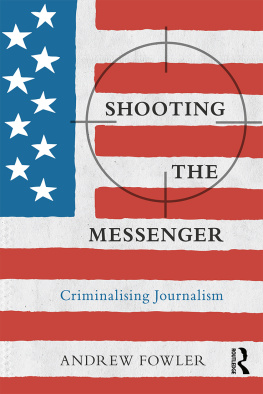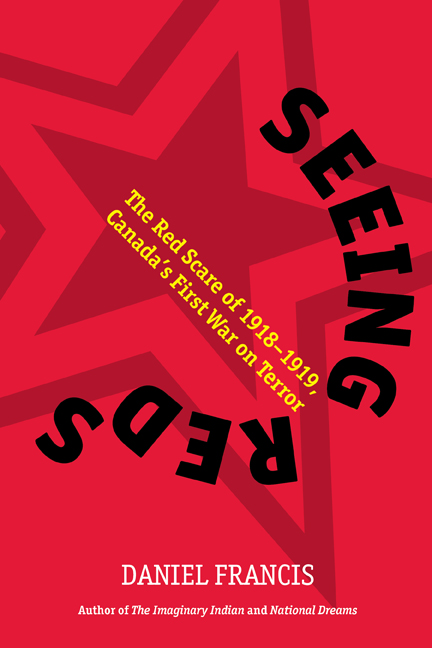As readers will discover for themselves, this book relies heavily on the work of many academic scholars who have been active in the field longer than I. Their books and articles are listed in the sources, but I should single out the work of Gregory Kealey, David Bercuson, Craig Heron, Linda Kealey, Barbara Roberts, and Tom Mitchell for special mention. Id like to thank especially Mark Leier of Simon Fraser University who read the manuscript and made many important suggestions that clarified both the presentation and the argument. The subject of the Red Scare has been niggling at me for a long time. My own research has spanned many years, off and on, and took me to libraries and archives in Ottawa, Toronto, Winnipeg, Peterborough, and Vancouver. The dedicated librarians and archivists there are too numerous to mention individually; as a group they made the research possible and, as always, I am grateful for their assistance. Lastly, thanks to my friend Frank Mackey in Montreal for his help and to my editor at Arsenal Pulp, Susan Safyan, who saved me from numerous embarrassing blunders, both grammatical and historical.
Contents
SEEING REDS
Copyright 2010 by Daniel Francis
All rights reserved. No part of this book may be reproduced or used in any form by any meansgraphic, electronic, or mechanicalwithout the prior written permission of the publisher, except by a reviewer, who may use brief excerpts in a review, or in the case of photocopying in Canada, a licence from Access Copyright.
ARSENAL PULP PRESS
#101-211 East Georgia St.
Vancouver, BC
Canada V6A 1Z6
arsenalpulp.com
The publisher gratefully acknowledges the support of the Canada Council for the Arts and the British Columbia Arts Council for its publishing program, and the Government of Canada through the Canada Book Fund and the Government of British Columbia through the Book Publishing Tax Credit Program for its publishing activities.
Efforts have been made to locate copyright holders of source material wherever possible. The publisher welcomes hearing from any copyright holders of material used in this book who have not been contacted.
Editing by Susan Safyan
Author photograph by Patrick Francis
Printed and bound in Canada
Library and Archives Canada Cataloguing in Publication
Francis, Daniel
Seeing reds [electronic resource] : the red scare of 1918-1919, Canadas
first war on terror / Daniel Francis.
Includes index.
Also issued in print format.
ISBN 978-1-55152-384-2
1. CanadaHistory1918-1939. 2. Anti-communist movementsCanada.
3. General Strike, Winnipeg, Man., 1919. 4. Soviet UnionHistoryRevolution,
1917-1921Influence. I. Title.
FC555.F73 2010a 971.061 C2010-904296-4
Nothing to Fear but Fear-Mongering Itself

The voice of dissent in Canada may be stopped, but it will be a fearful and irresolute people who do it. Thomas Berger, Fragile Freedoms
DURING THE WINTER of 191819, the Canadian bourgeoisie, unsettled by the war and alarmed at the success of the Bolsheviks in Russia, believed it was facing a revolution. There was plenty of reason to think so. Labour unrest had increased dramatically, and the overheated rhetoric of the Reds was promising a dictatorship of the proletariat. General strikes were threatening to bring major urban centres to a standstill. An alien ideology, successful in other countries, seemed to have won the allegiance of important elements of the working class.
With the benefit of hindsight, we can see that there was no serious chance that Canada would have experienced an insurrection in 1919. Revolutionary ideas had wide currency, but even within the labour movement itself they appealed to a minority of workers. While the unrest associated with Winnipegs general strike did spread to other major cities, nowhere else did it disturb much more than the complacency of the employers. Despite what the fear-mongers said, there was never a large appetite in Canada for violent social change. This does not deny that working people felt disenfranchised and were making unprecedented demands for greater control of their own lives. Nor was this effort confined to the workplace. Women, for example, were agitating for equality on the job and wanting to play a larger role outside the home. Farmers had grievances about tariff policy, freight rates, and the power of the banks. In short, there was a broad desire for change. If peaceful change, brought about through the ballot box, can be called revolutionary, then perhaps there was a revolution going on in post-war Canada. But even so defined, it was not a revolution that threatened the stability of the state. Rather, it was the government itself that did most damage to democratic institutions by wielding its power in such an arbitrary manner.
But the Red Scare was not about reality. Because of its power and its access to the media, Canadas ruling elitethe government and the business leaders that supported itwas able to stir up a scare without producing much in the way of hard evidence that a threat actually existed. Under the pretext that the country was threatened by an enemy within, and using the powers of the War Measures Act, the government launched a campaign of repression against its own citizens, aimed at left-wing political parties, ethnic organizations, and labour unions, supported by a propaganda campaign magnifying the threat posed by Red revolutionaries. Ottawa banned a variety of progressive organizations and periodicals. It became illegal to use certain foreign languages or to read publications from banned organizations. Police forces were asked to infiltrate unions and political groups to gather information that could be used to discredit their leaders as Bolshevik. The modern RCMP emerged at this time as an internal surveillance agency with operatives across the country spying on Canadian citizens. Federal election laws were manipulated to exclude voters who might oppose the government and enfranchise those who might support it. The mainstream press was fed informationand misinformationto stoke the fear of Red revolution. Members of the radical left were dismissed as aliens who had no rights of citizenship. Parliament hurried laws into effect that were unprecedented in their infringement on civil liberties. In Winnipeg, armed militia joined police in the streets to put down a public demonstration with force. Show trials were orchestrated to expose the extent of the conspiracy against the state and to punish its supposed leaders.
The government, or at least significant elements in the government, were genuinely convinced that a threat existed. They were spooked by the rhetoric of the radicals and the revolutionary events that they saw unfolding around the world. At the same time, it served their interests not to question too deeply the extent of Bolshevik influence in Canada. It was easier to portray all demands for a new economic order as Bolshevism. Scaremongers believed in the threat of revolution, but they wouldnt have believed if it hadnt served their ideological agenda to do soand that agenda was to discredit radical change and control the terms of the debate about the emerging post-war world. Much of the information that inflamed the Scare came from the police, which also had its own an agenda. It served the interests of the police to inflate the Red threat because it gave them a rationale for expanding their own activities. For example, in the case of the RNWMP, it is probable that the force would not have survived if the Scare had not come along to give it a new reason for existing.


